A koala escaped from the bushes of fire and smoke, frightened and overwhelmed. It crawled across the hot road and crashed into the burning forest opposite ...
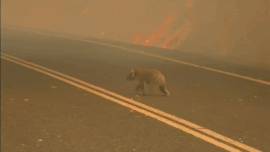
Koala in fire
Seeing this scene, Toni Doherty immediately ran out of the car. She didn't think too much and ran straight to the trapped koala.
"When I ran over, I knew I had to cover Koala, so I took off my short sleeves and put on Koala. I just tried to rescue it from the fire, where It's too hot, it's terrible, "Doherty said in an interview with the media.
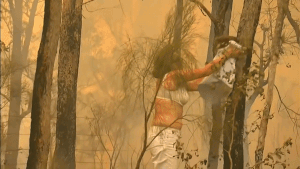
Doherty took off his short sleeves and hugged Koala
The scene where Doherty rescued Koala was filmed and posted online. In the video, you can clearly hear the screaming sound of Koala at that time.
"A lot of times, koalas don't speak out," said Professor Chris Dickman, an ecology expert at the University of Sydney. During the mating season, the male koala makes a low grunt and is quiet at other times. Therefore, the koala scream in the video is likely to mean that it was suffering tremendous pressure or pain at the time.
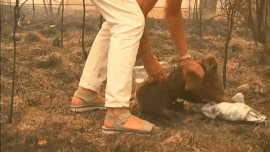
Doherty waters koala
When Koala was first rescued, the hair on Koala's body was burned, and Doherty kept watering Koala's body, then wrapped it in a blanket and held it in a safe place. The severely burned koala was then taken to koala hospital.
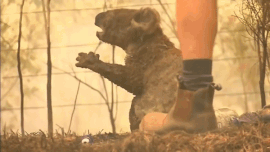
Cover Koala with a blanket
"She is a legend. It is really a legend. There is no other word to describe her." The medical staff of Koala Hospital praised Doherty.
Lucky man who got help
The koala rescued by Doherty was a male. His claws, limbs, nose, chest, and other parts had burns to varying degrees, and his body's hair was burnt. At the Koala Hospital in Port Macquarie, Australia, the doctor quickly hydrated Koala, applied ointment, wrapped a bandage, and put on an oxygen mask ...
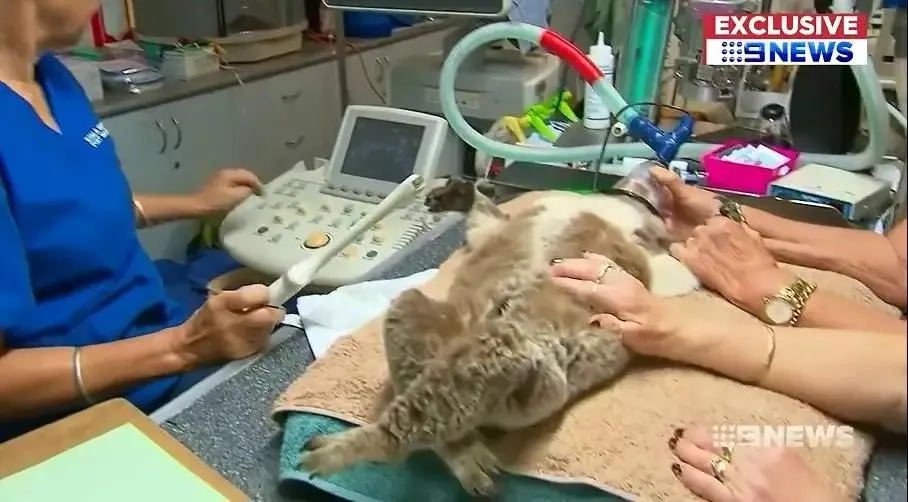
Koala being treated
After treatment, this koala's body is slightly better, and it can eat the familiar eucalyptus leaves. Each time the medical staff feeds a leaf, it takes an hour to feed. Because its burns are very serious, it is still receiving a lot of pain relief treatment, and medical staff must give every possible care to them without fear of slackening. The hospital said that it is only about 50% likely to survive; even if this time passes, the recovery will be very long.
On November 21st, Ms. Dorty, the rescuer, came to the Koala Hospital, and once again saw the koala she rescued herself, and named it Lewis, with the same name as one of her grandsons.
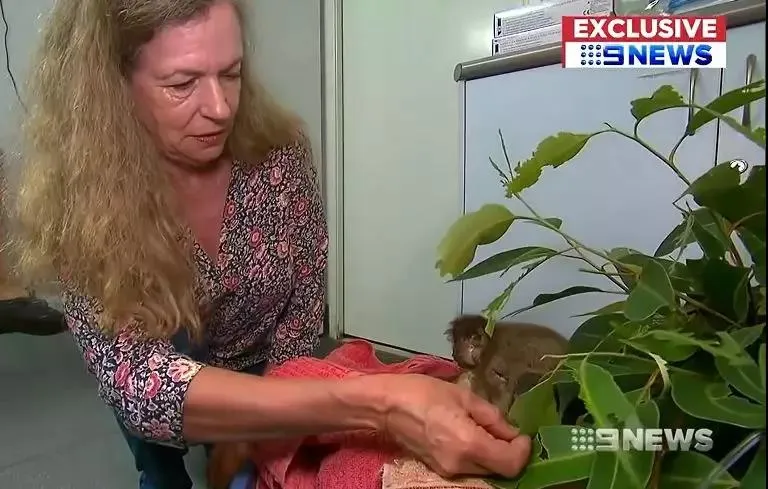
Last week, Doherty reunited with Koala Louise
Koala Louise was lucky to be rescued, and also lucky to be Kate. Rescuer Darrel rescued him in a national forest in eastern New South Wales.
Kate had a large burn all over his body. When he arrived at the hospital, his body had severe dehydration, severe pain, and looked very sick. With the professional help of medical staff and the kind help of volunteers and donors, Korakite is slowly recovering.
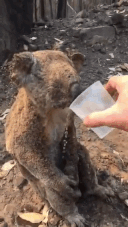
Koalaket drinking water, severely dehydrated when rescued
Currently, Koala Hospital has received dozens of koalas. In addition to Koala Hospital, some kind residents are also actively involved in rescue work.
The good-hearted couples, Christeen & Paul McLeod, turned their home into a koala rehabilitation center. In the living room, 24 surviving koalas are being wounded. They also gave each koala a name, and then put a post-it note on their respective baskets.
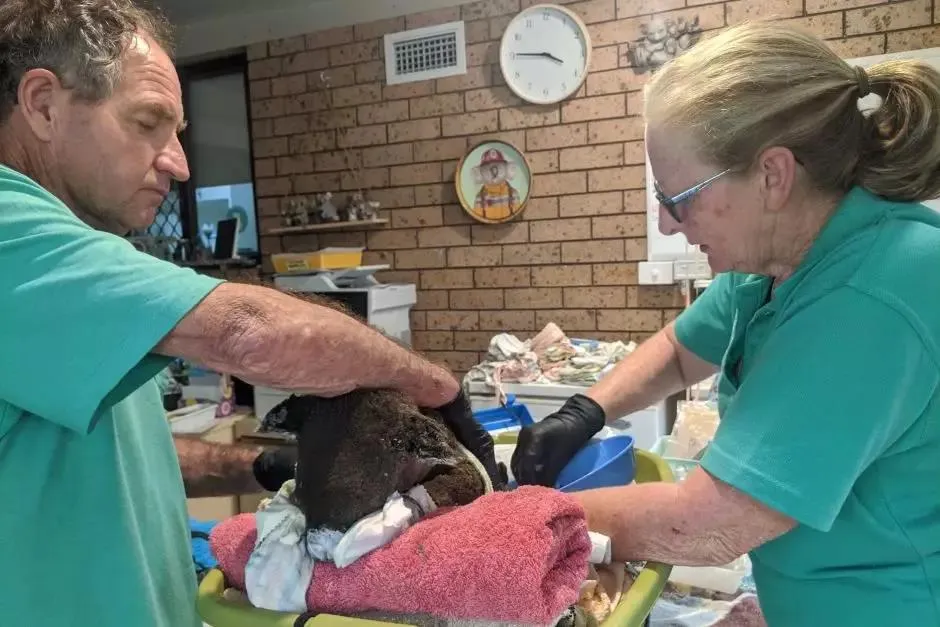
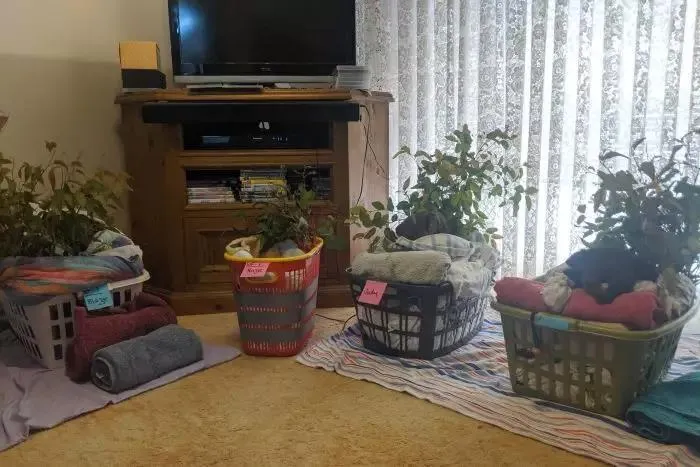
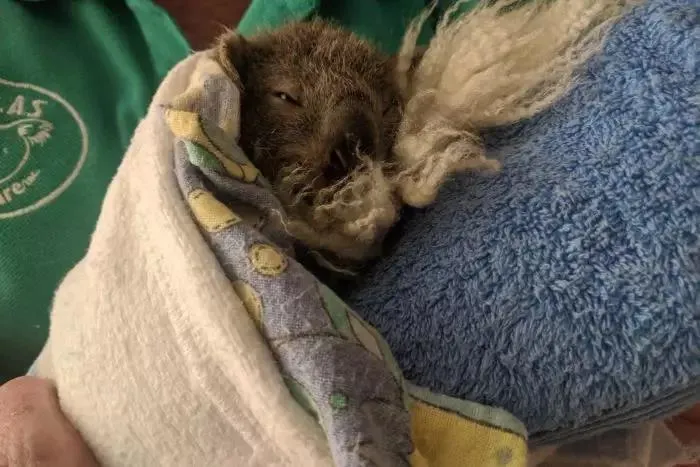
MacLeods rescue Koala
"Hopefully we can save some koalas," said Ms. Christeen McLeod. She also said that efforts to protect koalas and koala habitats were not enough.
More koalas suffer misfortune
But the lucky ones who were successfully rescued are only a few, and many koalas have lost their lives.
It is estimated that hundreds of koalas died in recent forest fires in New South Wales and Queensland, Australia.
Copper is not so lucky. The area where it lives is burned for several weeks. Many of the leaves on the tree have been burned out. The environment is bad and the smoke is poisonous. In addition, Koala relies on eucalyptus leaves for water. There is almost no fresh food to eat in the fire area. When found, Cooper was dying and had to be euthanized.
Other animals, such as kangaroos and birds, will flee as soon as possible when they are in danger. However, koalas are slow and will only climb up the tree, then curl up into a ball and wait for the danger to pass. When the fire is fierce, this way of protecting himself will put Koala in a terrible dilemma.
Koalas crawling onto a tree may fall due to overheating temperatures and be burned to death. If a trapped koala inhales too much dense smoke, the respiratory system can be seriously injured. If you want to climb down from the tree, Koala's claws may be burned by the hot trunk, preventing Koala from climbing normally. For koalas, paws are very important and irreplaceable. "Koalas can't survive without climbing," stressed Sue Ashton, director of the Koala Hospital.
Koalas who have been severely burned, even if they are lucky to survive, may suffer severe pain for the rest of their lives. Then, due to animal welfare considerations, the hospital may also euthanize koalas.
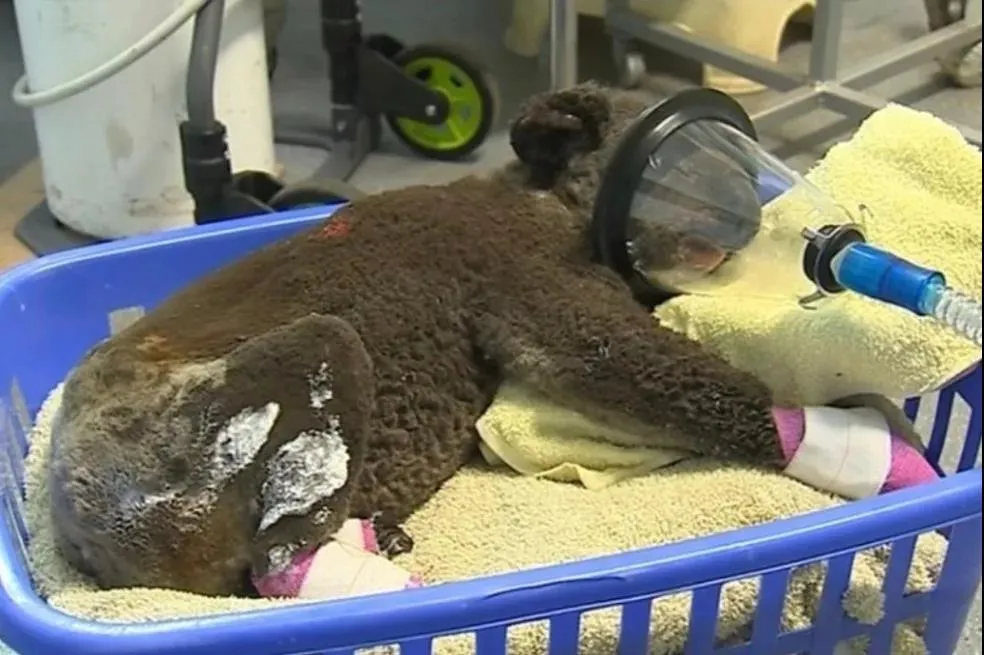
Koala Paul being treated
In Port Macquarie, an important koala habitat has been destroyed by the fire. About 700 koalas lived there. Koala Hospital said that more than 350 koalas may have been killed in the fire.
Not only is this a significant loss of koala genetic diversity, it may also have a fatal impact on the local koala population. Some even believe that the fire may burn the koala's protection rating from "endangered" to "endangered." At present, there are around 43,000 koalas in the wild, and the number is continuously declining, which may be due to loss of habitat, infectious diseases, dog attacks and climate change.
Koala is a national symbol of Australia. "These unique animals we have are not found elsewhere on the planet, however, we are killing them," said Cheyne Flanagan, clinical director of Koala Hospital, sadly, "a country Tragedy. "
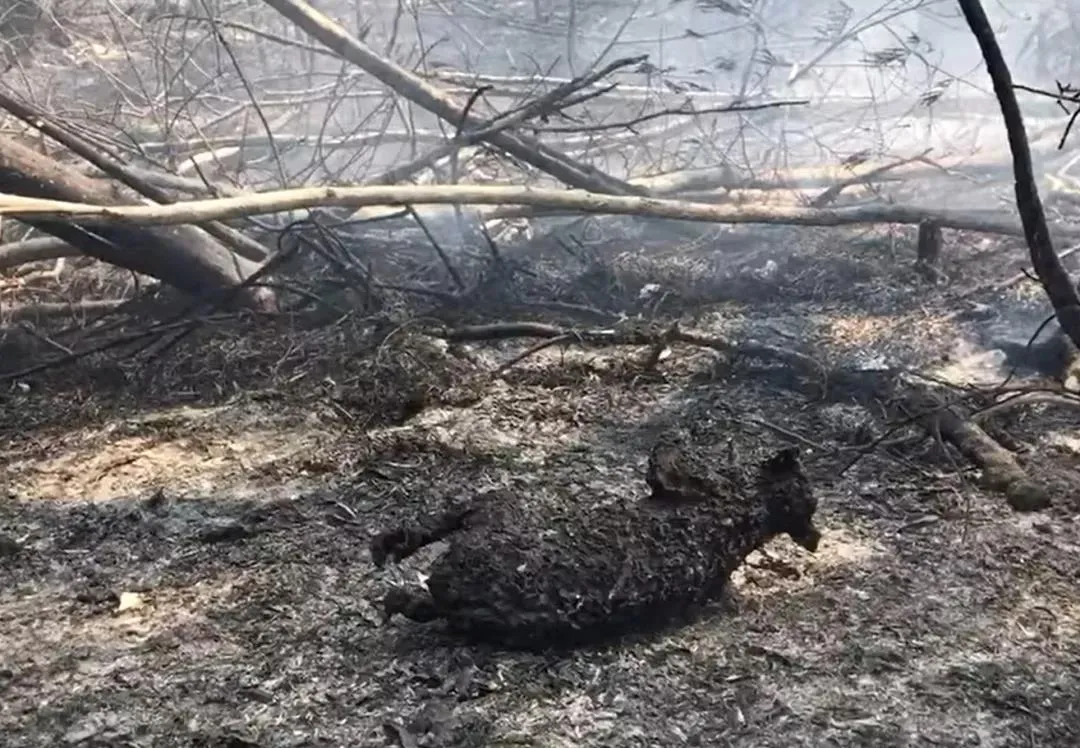
Burned Koala
This year's forest fires are different
In contrast to the northern hemisphere in winter, Australia in the southern hemisphere is entering summer. Usually Australia's summer begins in December. However, before the summer officially entered, some places were already extremely hot.
Last Thursday, the highest temperature in Melbourne reached 40.9 degrees Celsius. The last time such a high temperature occurred in November was 1894. Nullarbo in South Australia even reached 46.6 degrees Celsius. According to the Bureau of Meteorology, record-breaking high temperatures hit much of Australia last week.
At the end of October, lightning triggered a fire in a forest 300 kilometres north of Sydney. Prolonged drought, strong winds, and unusually high temperatures spread the fire quickly. In New South Wales, the fire area even exceeded the combined area of the past three years.
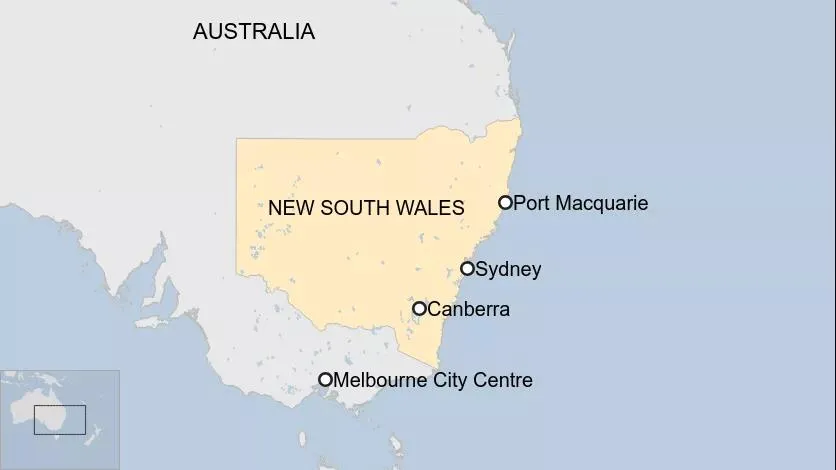
Fires are more severe in New South Wales
Some wet ecosystems that were once considered safe are now on fire.
"High and moist eucalyptus forests rarely catch fire, but now there are repeated fires. A swamp near Port Macquarie has dried up and the organic deposits in the ground have caught fire. When the groundwater level is lowered, organic matter in the soil is too It is too easy to burn. We have found that swamps are burning in many places, "said David Bowman, a fire ecologist and director of the University of Tasmania Fire Center.
In addition to New South Wales, there are large and small fires elsewhere in Australia. The cause of the fire is complex, Bowman said, but given the unusual size and intensity of the fire, it's hard to say that it has nothing to do with climate change.
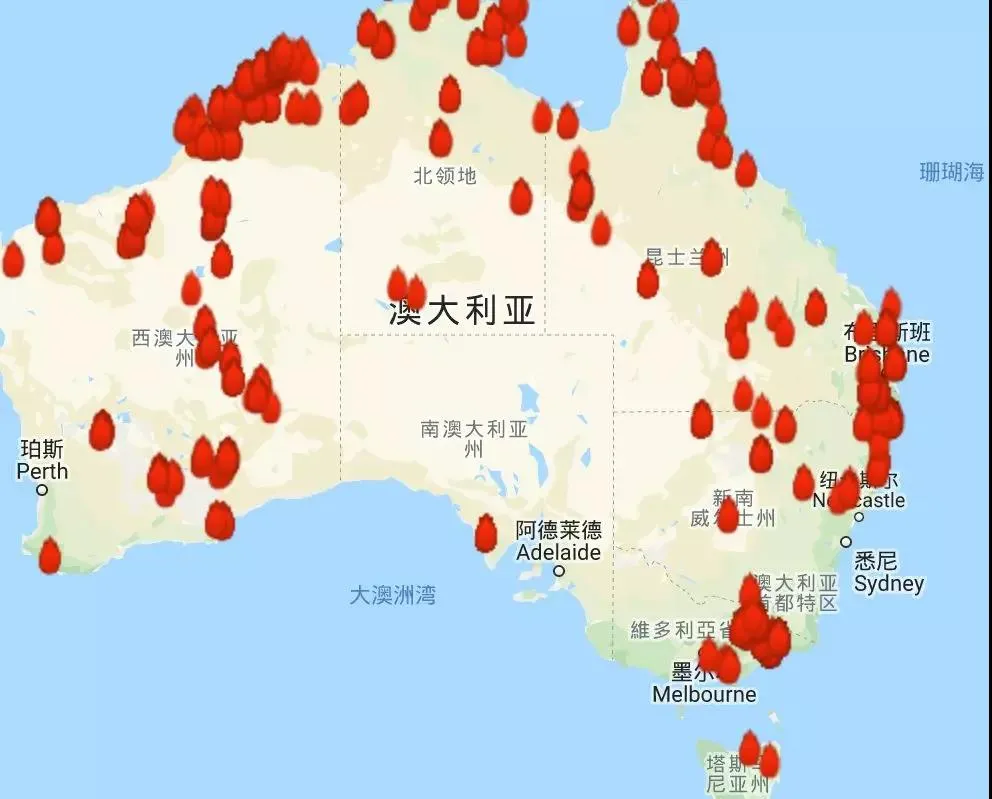
Areas currently on fire
Forest fire still burning
Rescue work continues
How big is the burning fire? How fast is the fire spreading? Unfortunately, this important information is difficult to measure.
Many firefighters are fighting the fire front, and Koala's search and rescue team is actively searching for surviving koalas. The search scene includes professional scouts, volunteers, and koala search and rescue dogs. Some search and rescue dogs can recognize koala's feces, and some search and rescue dogs can sniff koala's hair and identify where there is a living koala. Among them, the search and rescue dog Taylor has helped people find eight koalas.
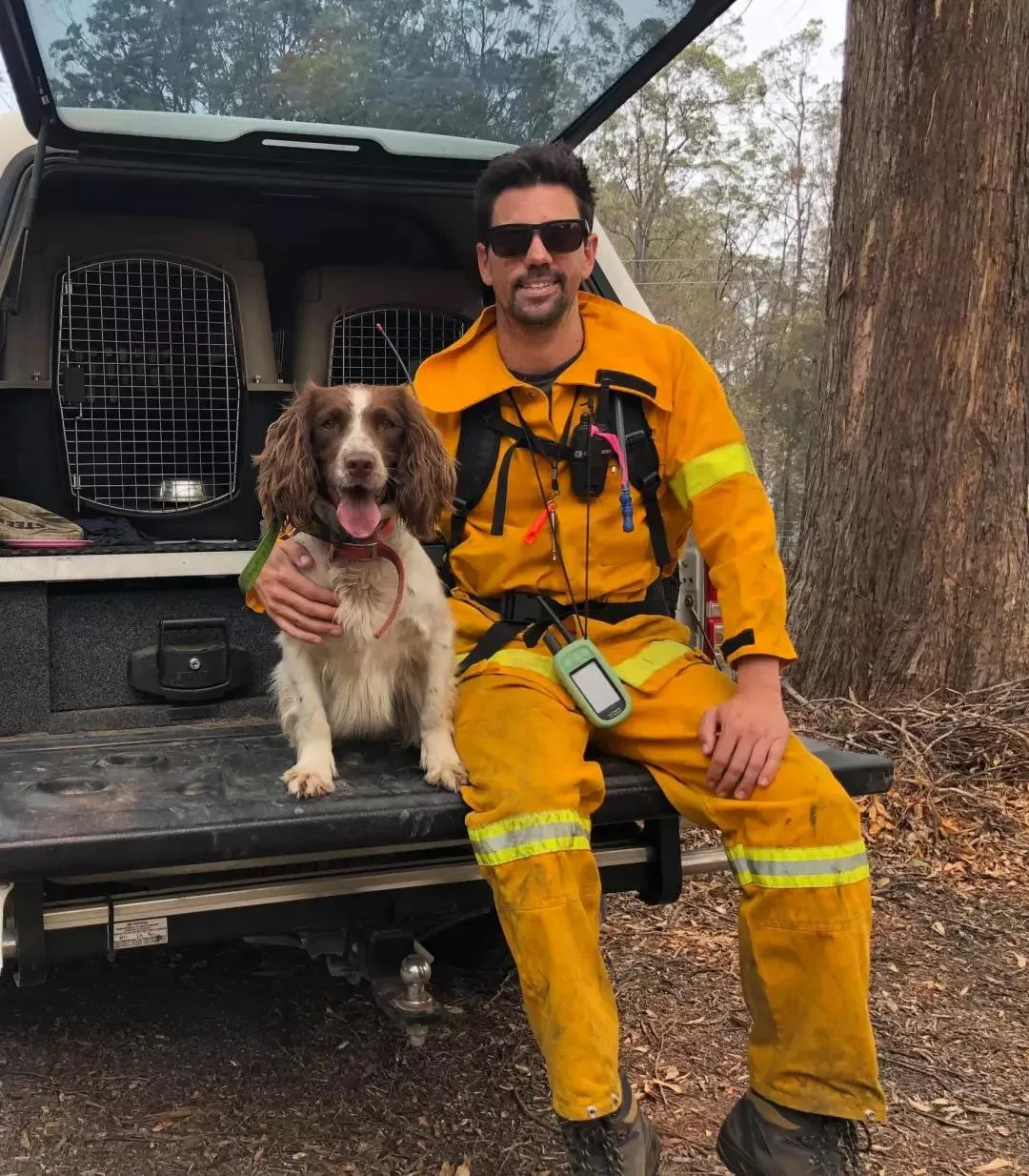
Search and rescue dog Taylor helps Koalas
In addition to going to the scene to help search and rescue, people also donated enthusiastically. Koala Hospital sought online help the other day and hoped to get a donation of $ 25,000. At present, the amount of money received by the hospital has far exceeded the expected many times.
For these enthusiastic donations, Koala Hospital intends to use it for wild koala breeding projects and expand the scope of the original koala drinking station project. The remaining donations will also help other animals affected by the fire.

Koalas generally do not drink water, but instead get water through the leaves, but now Koala seems to be getting thirsty and drinking more and more
Koalas were not the only victims, and more than 600 homes in NSW were destroyed in the fire. So far, six people have been killed. The smoke from the fire was widespread and had a negative impact on children, the elderly and people with heart and lung disease.
The animal hospital is also working to treat other animals injured in the fire. In addition to burns, after the fire, many animals may be attacked by cats and dogs or find themselves in a car accident on the road while searching for a new home.
Many are heartbroken by the fate of wildlife.
In the long run, the following measures can really help wildlife:
Maintain complete and connected habitats;
Manage invading predators;
Controlled combustion (burn out some hidden dangers under safe conditions);
And take action to combat climate change.
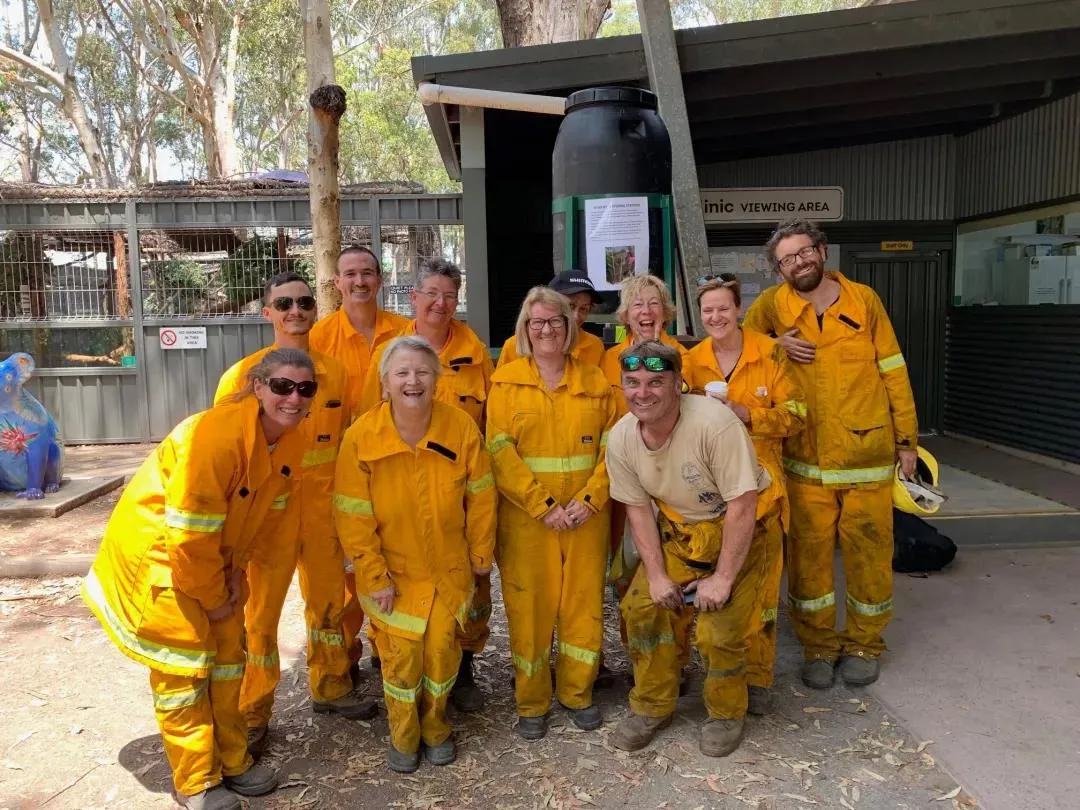
A search and rescue team
The fire is still burning, and the hotter summer in the southern hemisphere is approaching. The burned habitats are difficult to recover in the short term. These are inevitably worrying that the problem of casualties may become more serious, especially the slow movement and the lack of escape from dangerous koalas.